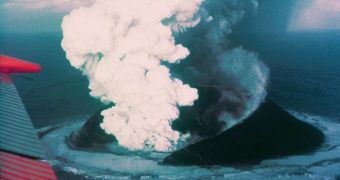Propositions for missions to analyze the Earth's interior are currently exhibiting a spike in numbers, with experts believing that what may have looked like science-fiction only a few years ago might become true.
Scientists have thus far poked and prodded in virtually all environments imaginable, from the deep ocean floor hydrothermal vents to the underground lakes of Antarctic and all layer of the atmosphere.
But they are still missing one from their long list, and that is the environment made up by Earth's mantle and core. Exploring the harsh events and phenomena that bear so much influence on our daily lives has until now been impossible.
As soon as you (hypothetically) descend under the Earth's mantle, you hit two major snags that stand in the way of you exploring further.
One is the fact that the mantle is a viscous layer of molten lava, which means it is very dense and difficult to pass by or swim through.
The other main obstacle is heat. In order to keep rock molten and moving, you need extremely high temperatures. Understandably, as you go lower, things heat up even more.
But engineers at the Newcastle University, in the United Kingdom, managed to develop a series of electronic sensing devices that rely on a chemical called silicon carbide for protection.
According to the group, this allows for iPhone-sized objects to be dropped straight into the mantle, such as for instance through the open crater of a volcano.
The team, which is based at the NC Center for Extreme Environment Technology, says that the electronic sensors they developed can withstand temperatures as high as 900 degrees Celsius, the equivalent of 1,652 degrees Fahrenheit.
According to the scientists, the main reason they created the new sensors was because they wanted to develop an early warning system for volcanic eruptions.
They hope that the readings sensors such as this will provide from the world's volcanoes could be used to create global risk maps for volcanic eruptions. This could potentially save numerous lives.
“At the moment we have no way of accurately monitoring the situation inside a volcano and in fact most data collection actually goes on post-eruption,” says NC professor Dr Alton Horsfall.
“With an estimated 500 million people living in the shadow of a volcano this is clearly not ideal,” adds the expert, who is the co-director of the Center, alongside colleague and NC professor Nick Wright.
We still have some way to go but using silicon carbide technology we hope to develop a wireless communications,” he concludes, quoted by Science Blog.

 14 DAY TRIAL //
14 DAY TRIAL //